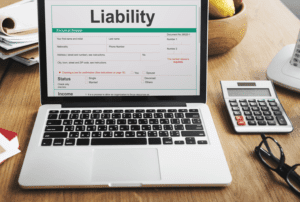
The concept of audit risk is of key importance to the audit process and F8 students are required to have a good understanding of what audit risk is, and why it is so important. For the purposes of the F8 exam, it is important to understand that audit Grocery Store Accounting risk is a very practical topic and is therefore examined in a very practical context. Students must also be prepared to apply their understanding of audit risk to questions and come up with appropriate risk assessment procedures. Inherent Risks are perhaps the most naturalistic risk that often occurs during an auditing process. The main reasons behind inherent risks lie as a result of the nature of the transaction involved. At certain times, auditors need to tackle these risks by using their professional judgment, as well as their analytical insights to reduce the inherent risk of material misstatement.
- By understanding both audit risks and fraud risks, auditors can provide a more comprehensive and reliable assurance to financial statement users.
- The auditor assesses the risks at the entity control level and deep dives into the risks related to the activities control level that could significantly affect the quality of financial information.
- Therefore, it is important for organizations to have some knowledge about fundamental concepts of security auditing and how to apply them in practice.
- Entities being audited sometimes feel fraud-related questions are probing and invasive, but interviews must be conducted for every audit.
- This is due to the derivative is the type of financial instrument that is generally considered complex in the accounting field.
What Are the Audit Risks?

The auditor must assess areas of the financial statements where errors or misstatements are most likely to occur, and design tests to detect the potential misstatements. The first audit assignment is also inherently risky as the firm has relatively less understanding of the entity and its environment at this stage. Audit risk is when your financial statements are incorrect and the audit says they are correct. The risk lies in that the audit does not detect that the financial statements are incorrect and this places your business at risk.
Audit Risks: Definition, Types, Models and More

Frequency can vary with the requirements of the industry, the tolerance for risk, and the extent of changes in technology. Some companies perform an audit once a year or once every six months, while others scan their networks on a monthly or quarterly basis. High risk industries, for instance, finance audit risk model or healthcare, may use near-continuous scanning.
How To Reduce?
The integration of the security audit checklist with enhanced best practices ensures that the framework is as effective as possible. This way, security becomes an inherent part of daily processes, Accounting Periods and Methods staff, development cycles, and compliance requirements. Control risk involved in the audit also appears to be high since the company does not have proper oversight by a competent audit committee of financial aspects of the organization.

To sum up, a security audit checklist is a roadmap that turns a general security assessment into a structured, reproducible procedure. When planning audit fieldwork, your audit team meets to brainstorm potential company- and industry-specific risks and outline specific areas of inquiry and high-risk accounts. Entities being audited sometimes feel fraud-related questions are probing and invasive, but interviews must be conducted for every audit.
